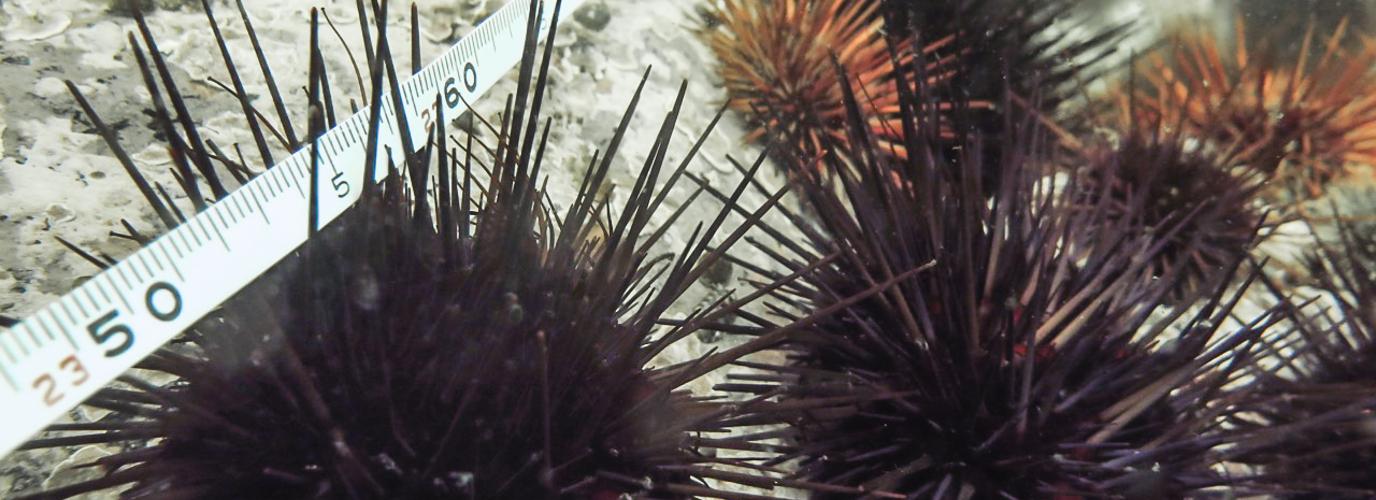Sea Urchin Size Matters
How much kelp would an urchin chew if an urchin would chew kelp?
How many sea urchins does it take to eat a kelp forest? Researchers have studied the well-known relationship between sea otters, urchins, and kelp off the Pacific Coast of North America for decades, but according to new research from Simon Fraser University and the Hakai Institute, this is only half the question. It’s not just how many urchins are out there. It’s how big they are.

“How much an urchin can eat depends on its size,” says Christine Stevenson, lead author of a recent study published in the journal Ecology and Evolution. Because of this, an army of small urchins does not munch the same amount of kelp as an army of bigger urchins. Urchin sizes are an important piece of information to accurately predict the growth or decline of kelp forests. And these kelp forests are productive habitats that provide shelter and food for many other ocean species.
Sea otters, sea urchins, and kelp embody a classic predator-prey-plant story. The fast-growing kelp is eaten by urchins, whose populations are controlled by sea otters—at least they were before fur traders wiped out sea otters over much of their range in the 19th century.
Now, sea otters are returning, in some cases to areas where they’ve been absent for over a hundred years. And when they do, they find a stocked buffet. Ginormous red sea urchins as far as the otter eye can see. When cracked open, these urchins are irresistible packets of energy for a hungry otter.
“Sea otters want to get the best bang for their buck, so given the choice they go after the biggest red urchins,” says Stevenson.

Stevenson decided to find out if otters’ penchant for big urchins would have consequences for the kelp forest. She conducted an experiment in which she placed different-sized urchins into tanks and measured how fast they ate the kelp she provided to them. She then applied that model to wild urchin populations on the Central Coast of British Columbia.
“If you’re trying to make a prediction, you want to make it as accurate as possible. In most previous models, scientists assumed each animal was interchangeable,” says Stevenson.
In these simpler models, a big urchin equaled a small urchin. However, when scientists only used the number of urchins to predict how much the urchins ate, the models overestimated how much kelp they grazed.
“But if you incorporate urchin size, you get a much better sense of how much kelp the urchins will eat,” says Stevenson.
Simon Fraser University associate professor Dr. Anne Salomon, who coauthored the paper with Stevenson and Hakai post-doctoral researcher Kyle Demes, has been monitoring the kelp forests on the BC Central Coast with the Hakai Institute since 2013.
They watched as sea otters returned to the Calvert Island area around 2013, and the total number of urchins declined rapidly. In just two or three years, most of the large urchins in particular have become otter fodder, and the urchins that survived tended to be smaller.
Now, the group is trying to forecast what will happen as sea otters continue to expand their range along the Central Coast, devouring large urchins along the way, and altering vital kelp forest habitat. And if we want to more accurately predict how many urchins it takes to eat their way through a kelp forest, size matters.


